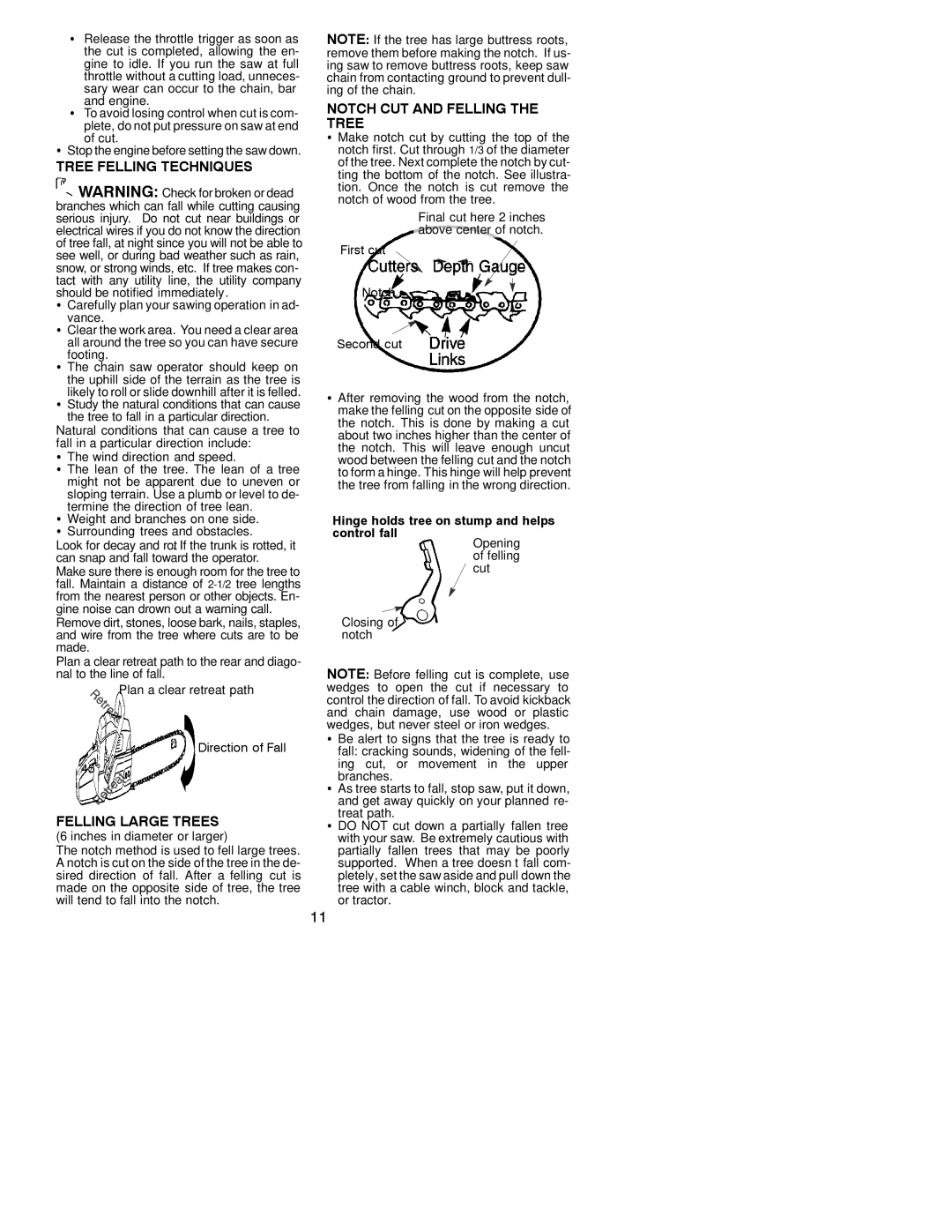
SRelease the throttle trigger as soon as the cut is completed, allowing the en- gine to idle. If you run the saw at full throttle without a cutting load, unneces- sary wear can occur to the chain, bar
and engine.
STo avoid losing control when cut is com- plete, do not put pressure on saw at end
of cut.
SStop the engine before setting the saw down.
TREE FELLING TECHNIQUES
![]() WARNING: Check for broken or dead branches which can fall while cutting causing serious injury. Do not cut near buildings or electrical wires if you do not know the direction of tree fall, at night since you will not be able to see well, or during bad weather such as rain, snow, or strong winds, etc. If tree makes con- tact with any utility line, the utility company should be notified immediately.
WARNING: Check for broken or dead branches which can fall while cutting causing serious injury. Do not cut near buildings or electrical wires if you do not know the direction of tree fall, at night since you will not be able to see well, or during bad weather such as rain, snow, or strong winds, etc. If tree makes con- tact with any utility line, the utility company should be notified immediately.
SCarefully plan your sawing operation in ad-
vance.
SClear the work area. You need a clear area all around the tree so you can have secure footing.
S The chain saw operator should keep on the uphill side of the terrain as the tree is likely to roll or slide downhill after it is felled.
SStudy the natural conditions that can cause the tree to fall in a particular direction.
Natural conditions that can cause a tree to fall in a particular direction include:
SThe wind direction and speed.
S The lean of the tree. The lean of a tree might not be apparent due to uneven or sloping terrain. Use a plumb or level to de- termine the direction of tree lean.
SWeight and branches on one side. S Surrounding trees and obstacles.
Look for decay and rot. If the trunk is rotted, it can snap and fall toward the operator.
Make sure there is enough room for the tree to fall. Maintain a distance of
Remove dirt, stones, loose bark, nails, staples, and wire from the tree where cuts are to be made.
Plan a clear retreat path to the rear and diago- nal to the line of fall.
Plan a clear retreat path
Direction of Fall
45_
FELLING LARGE TREES
(6 inches in diameter or larger)
The notch method is used to fell large trees. A notch is cut on the side of the tree in the de- sired direction of fall. After a felling cut is made on the opposite side of tree, the tree will tend to fall into the notch.
ing cut, or movement in the upper branches.
SAs tree starts to fall, stop saw, put it down, and get away quickly on your planned re- treat path.
S DO NOT cut down a partially fallen tree with your saw. Be extremely cautious with partially fallen trees that may be poorly supported. When a tree doesn’t fall com- pletely, set the saw aside and pull down the tree with a cable winch, block and tackle, or tractor.
11
